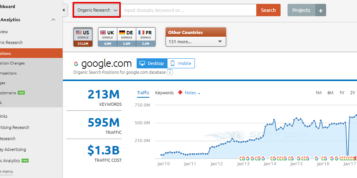The recent announcement by Bing that it intends to follow in Google’s footsteps and make major changes to its search algorithm proves one thing – mobile is here to stay. People are using their devices to search the internet more than ever before and search engines like Google and Bing have realised this and are moving the goal posts accordingly. But what do the changes mean to businesses? And what can be done to ensure websites are as mobile ready as possible?
The algorithm changes that Bing has recently proposed and Google has already rolled out will pave the way for a new era of mobile friendly websites. Similarly to Google’s changes, once Bing’s alterations come into effect then websites that are considered to be optimised for mobile devices will move up in the search rankings, whilst those that aren’t will be forced to pay the forfeit and move down in search results, decreasing overall online visibility.
In this day and age no organisation with a web presence can afford to ignore these updates. Doing so could wreak havoc on search visibility – potentially meaning significantly reduced traffic to websites, leading ultimately to sales drops.
So when did all this media hype surrounding mobile optimisation begin?
A few months ago, SEO boffins and website designers alike were taken aback by Google’s announcement about its new mobile friendly algorithm upgrade. The announcement caused somewhat of a stir and ruffled enough feathers for experts to coin the imminent change ‘mobilegeddon’. Google set April 21st as its implementation date but interestingly since then no-one has reported any significant differences. Perhaps the overall impact wasn’t as nearly as serious as some were predicting? In the days leading up to the change Google reported a 4.7% increase in mobile-friendly sites – so the lack of impact the changes appear to have had could be down to the fact that a number of businesses and webmasters heeded the advice of experts and made the changes in plenty of time.
Now, just as the dust has begun to settle on the whole ‘mobilegeddon’ debacle, another major search engine is announcing similar changes. Last month, Bing, the search engine designed by Microsoft, also announced that it would be releasing a new update for its search engine algorithm. Similarly to Google, these changes to Bing’s search engine would also favour mobile friendly websites over those that weren’t properly optimised for mobile devices. But businesses will be pleased to hear that compared to Google, it seems Bing is taking a softer approach.
So how does Bing’s algorithm differ to Google’s?
At first glance, Bing’s changes to are very similar to Google’s, however, there is one big difference between the two; whereas Google is taking an extremely hard line when it comes to punishing sites that aren’t mobile ready, Bing is being much more lenient. The key difference lies in the fact that Bing has stated that it will not remove the most relevant sites from its search results, even if they aren’t optimised for mobile. Put simply, the top five page results in any keyword search will not be affected by the new algorithm update.
A spokesperson for Bing has said that this decision was based primarily on the idea that it wanted to provide a useful service, and that it considers relevancy to be more important than mobile friendliness. And so it concluded that penalising the top search results didn’t seem like a particularly beneficial move for anyone.
Also, unlike Google, Bing has not specified a specific date for these new changes to come into effect as it wants its users to be eased in gently and wants to try to reduce potential anxiety over the change.
So how exactly does Bing determine if your page is mobile friendly?
There are a number of ways that businesses can test whether a site is mobile friendly or not:
Spacing of the buttons – It is important to ensure the buttons are easy to press with a finger and so sufficient spacing is essential.
Easy to read content – The content must be easy to read without zooming in or having to scroll from the left to the right.
Does the content load on mobile devices? – Flash is an example of content that isn’t mobile compatible as it does not render on mobile devices such as iOS or Android.
Ensure CSS, Javascript isn’t blocked from Bingbot or Bingbot mobile – It is vital that the bots are able to crawl resources and files to render a full page to ensure it is mobile friendly. Blocking these files will prevent Bing from understanding the layout and therefore prevent it from labelling a site mobile friendly.
Moving forward
Truth be told, by now all businesses should have heeded the advice of experts and taken measures to ensure their website is mobile friendly. In which case, the recent announcement by Bing shouldn’t come as too much of a shock. However for businesses that have yet to make the changes, the Bing announcement is just another reason to do so.
Unfortunately there is no way around these changes. The reality is that if your website isn’t optimised sufficiently for mobile then it could spell disaster for your business as it could mean falling down in the rankings and becoming almost invisible to prospective new customers.
However businesses shouldn’t lose sleep over the changes – Google has provided a huge amount of information regarding how to make sure a site is mobile friendly and Bing will probably do the same. That being said, it would be wise for businesses to monitor the news for any new announcements to ensure they stay up-to-date with any additional changes. But to really get ahead, it would be advised for businesses to bring in outside expertise to ensure they do all they can to increase visibility and future-proof the website.





